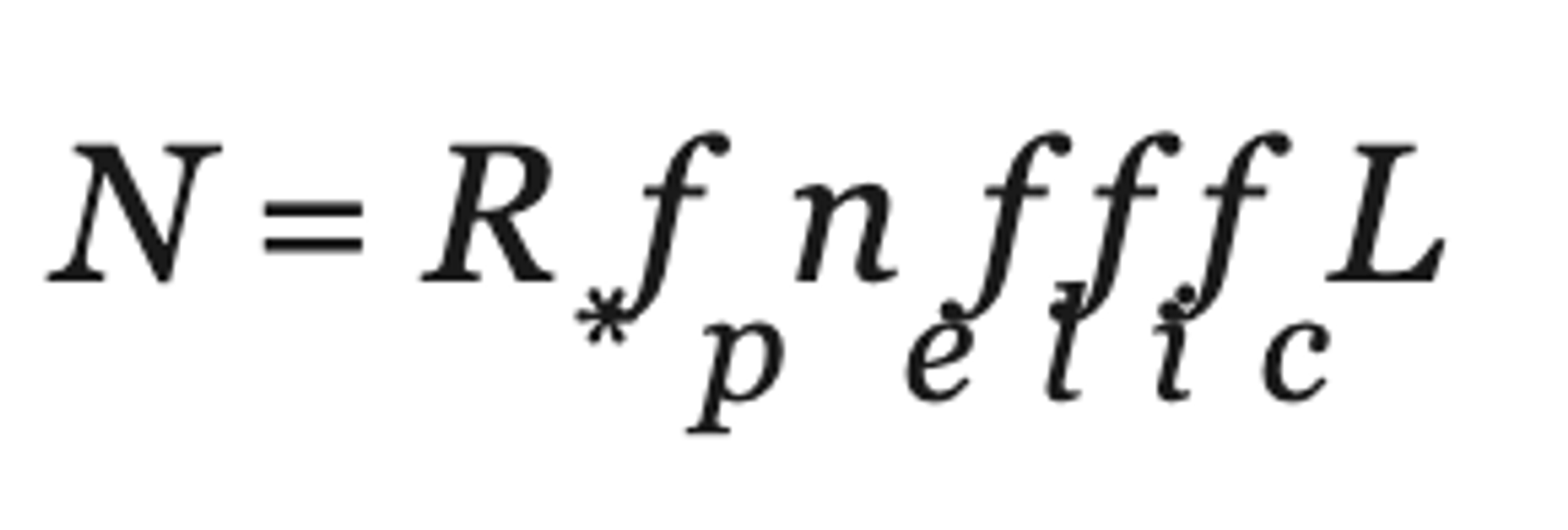Waiting for the aliens

When you look up at the sky and imagine the billions of billions of stars (actually ~ 200 billion trillion = 200 sextillion) and acknowledge that we’re just a tiny drop in the universal ocean, you can’t help but think that there are countless other civilizations out there, billions of alien species still to be encountered…
But is it really the case?
There are of course many reports of flying saucer sightings (even crashes), alien encounters (even abductions) but the information has never been fully confirmed.
As puzzling as all these experiences may seem, they could be simple hallucinations or the result of a bad interpretation. We have never reached any final scientific consensus on this topic. The debate is still open.
In the meantime, we’ve turned dozens of radio telescopes towards the sky, hoping to pick up waves from the depths of the cosmos. And so far we haven’t heard anything conclusive.
Which raises the question: are we alone in the universe?
Frank Drace Equation
In 1971, physicist Frank Dranke developed an equation to predict the amount of intelligent civilizations.

Basically it evaluates the probability based on a series of factors.
- = is the mean rate of star formation in the Galaxy (calculated by dividing the total number of stars in the Galaxy by the age of the Galaxy) (10 in the example below)
- = fraction of stars with a planetary system (0.5 in the example)
- = amount of planets in a solar system with an environment which could sustain life (2 in the example)
- = fraction of those planets which could actually sustain life (1 in the example)
- = fraction of those planets with intelligent life (0.1 in the example)
- = fraction of intelligent civilizations which have lived long enough to develop technology to send signals into space (we started to broadcast into space in 1974) (0.1 in the example)
- L = the duration of broadcast before those civilizations cease to exist (100 in the example)
If we gave ourselves 100 years of signal broadcast (until 2074), the equation for the Milky Way, our galaxy, would look like:
N = 10 × 0.5 × 2 × 1 × 0.1 × 0.1 × 100 = 10 intelligent civilizations
We could also apply the Kardashev Scale, splitting intelligent civilizations into 3 types based on their capacity to harness energy (We’re almost a fully accomplished Type I category. Read the Dyson Sphere article for details).
If there are 100 billion galaxies in the universe and if each of them could host at least 10 intelligent civilizations, that’s 1 trillion civilizations in the cosmos.
Why don’t we see anyone out there?
That’s the question that the Italian-American physicist Enrico Fermi asked his colleagues one day at lunch in 1950. No one could give a definitive answer.
The Fermi paradox is the intellectual conflict between the lack of undisputable evidence for extraterrestrial life AND the (very) high probability for their existence (based on Drake Equation)
How can we explain such a paradox?
The Great Filter
This concept was introduced by Robin Hanson, associate professor of economics at George Mason University, in 1996.
There could be a Great Filter behind us.
There’s a possibility that we’ve been the lucky ones, the only intelligent species in the vast universe to have overcome all the hard steps of evolution from unicellular organisms to conscious beings.
There’s a caveat though: Hanson also considers that there’s an overwhelmingly high chance that other intelligent civilizations might already have appeared, as detailed in our next section 👇.
The Great Filter could also be ahead of us.
The other potential explanation for the cosmic silence would be the fact that no civilization lives long enough to establish contact with other civilizations.
Basically, advanced civilizations would be annihilated by some form of cataclysm (asteroid, volcano eruption, etc.) or blew themselves up (nuclear war) before reaching a point of interstellar expansion.
Is there a third possibility?
Something less “obvious”?
Did we appear abnormally early?
Recently (2021) Hanson proposed a new theory to describe the evolution of life in the universe: grabby aliens.
Let’s start with some facts.
We’re orbiting around a star which is roughly 4.6 billion years old (and will live for another 5 billion years).
It is estimated that the average star in the universe would last for 5 trillion years, that 1,000 times longer.
In a recent podcast, drawing a parallel between life and cancer (a form of life), Robin Hanson and Lex Fridman first compared our seemingly super early emergence to the abnormality of cancers occurring in very young children.
It’s very rare. You could even say it’s unlikely.
Remember that word: unlikely.
The Big Bang occurred about 13.8 billion years ago.
That might seem like a long time for us but at a cosmic scale it’s still pretty early.
Life on earth (microbes) appeared roughly 3.7 billion years ago.
This could have been very early when compared to the potential life expectancy of our galaxy and the universe as a whole: it’s been estimated we would still have another 100 trillion years before the end of stars formation.
If you compare 3.7 billion years of age (= life on earth) with 100 trillion years, it gives you a sense of how early life would have developed on earth at a cosmic level.
Could we just be the first form of intelligent life to have popped up from the primal soup? May the next civilization not even have appeared yet, leaving us alone staring at the empty universe?
Well, that’s where it becomes complicated.
Hanson estimates that if our assumptions lead us to a very unlikely conclusion (that we would be some form of lottery-winning child cancer), it probably means that our assumptions are… wrong and that we should consider another explanation.
Grabby Aliens
Maybe we haven’t appeared very early but, in a typical fashion, closer to the end of the time window allowed for life emergence (as most cancers do, in old age).
In this theory, the universe is filling up really fast and other civilizations, much more advanced than ours, already exist out there.
They would be expanding at a speed close to the speed of light.
The speed of light c is exactly equal to 299,792,458 metres per second (approximately 300,000 kilometres per second; 186,000 miles per second; 671 million miles per hour)
They are what Hanson calls grabby aliens.
They’re in the game of fast expansion and might soon come after us. Except if we also become grabby in a reasonable timeframe and grab other planets before they do.
If such grabby aliens do exist, they will soon occupy most of the observable universe.
And once they occupy all of the inhabitable planets, they prevent the emergence of other advanced civilizations in a distant future, meaning that we’ve appeared in the typical timeframe.
In other words, we might not be grabby yet (in fast expansion mode) and could as well never become grabby but we’re probably not abnormally early in the grand scheme of things.
This being said, if we consider that grabby aliens are expanding so fast that we can’t see them coming (at a speed faster than 1/3 of the speed of light), we’ve probably emerged rather early (or in a very remote place). Otherwise, other grabby aliens would already have occupied earth instead of us.
Should we simply wait a few more years for the First Contact?
Or expand and join the grabby movement to claim our slice of the universe?
Even if we can assume that we were born in the typical emergence window, we don’t know exactly where we stand versus the other aliens.
If you watch the second video above, you’ll see at 2’35” that the model estimates that the universe would ultimately be filled by 87 grabby civilizations after 25 billion years, with the earliest ones grabbing the largest chunks of space.
At 14’47” we learn that based on our time of emergence, if we become a grabby civilization, we might ultimately control between 10,000 and 100,000,000 galaxies. The model also predicts that we would meet another civilization in about 50 million to 50 billion years, 100 million to 10 billion years if we include the extreme cases.
So when we say that grabby aliens are expanding “fast” and “coming after us”, the first contact isn’t for tomorrow.
Especially if you consider that our fate would be to become a grabby civilization (vs going extinct), which, according to the same model, probably means that we’re alone in our galaxy 😢.
The sky might still look empty for a very long time.
